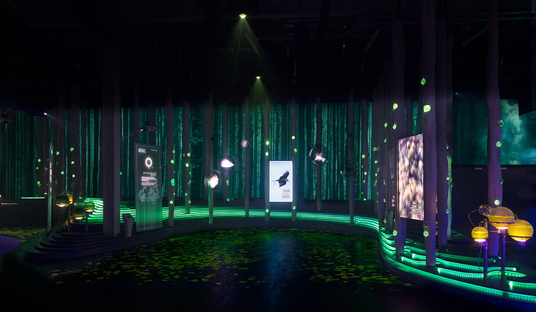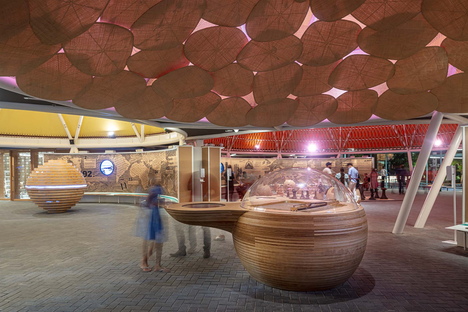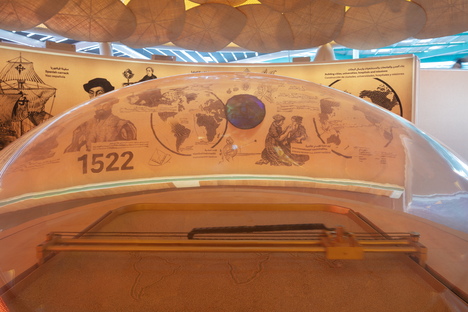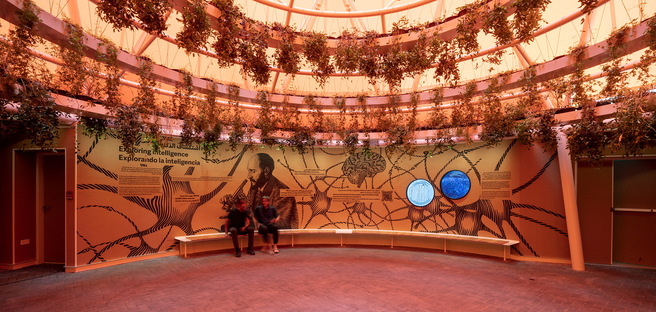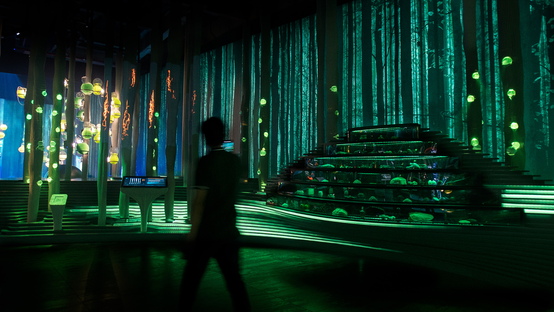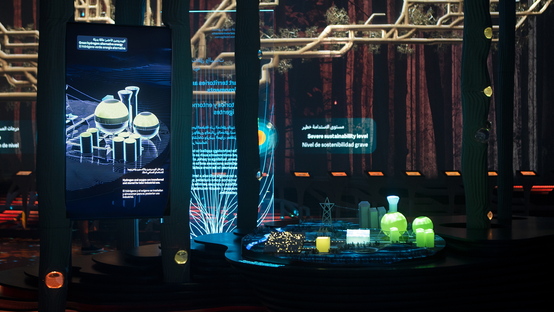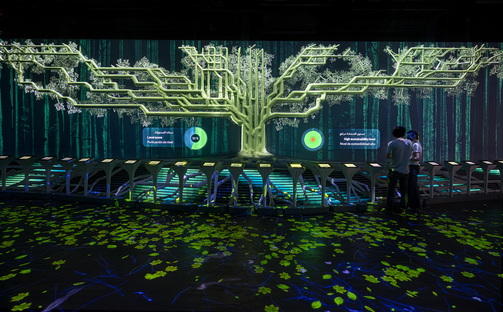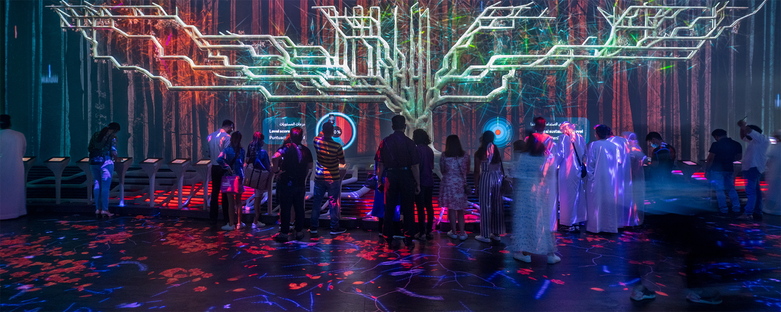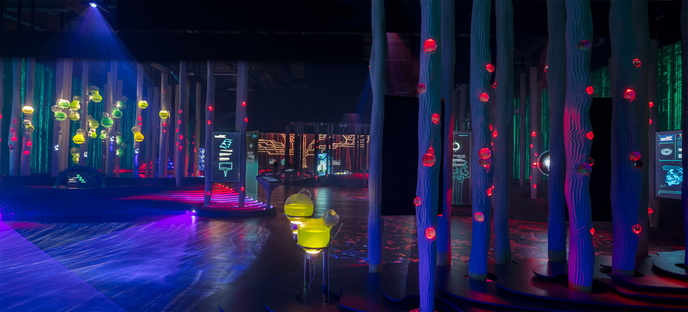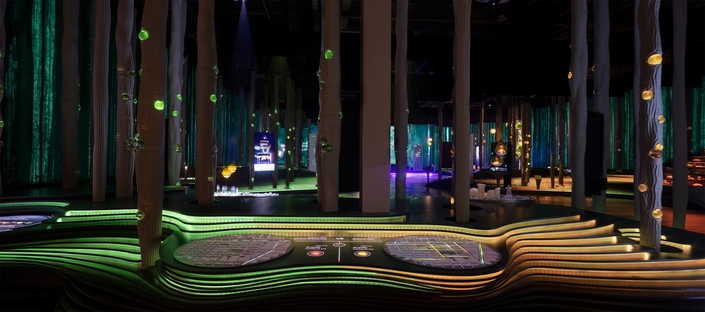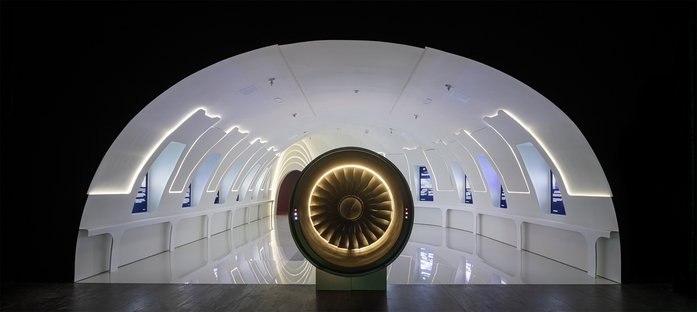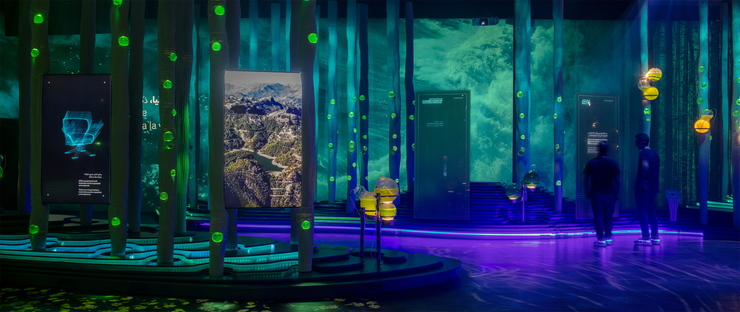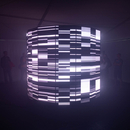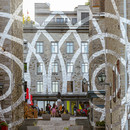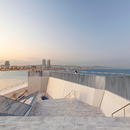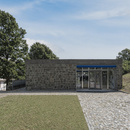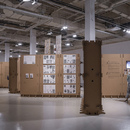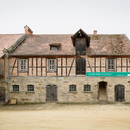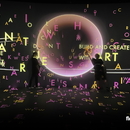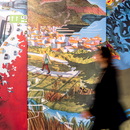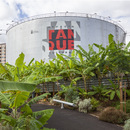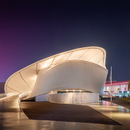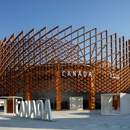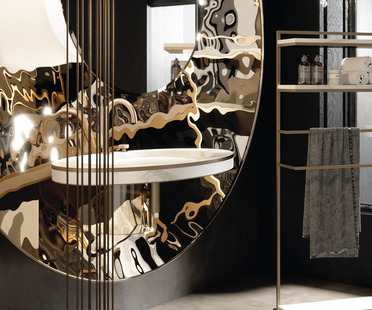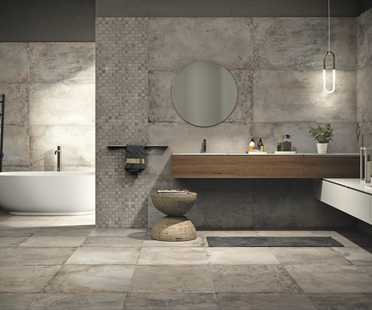19-10-2021
EXPO Dubai 2020, itinerary and exhibition spaces of the Spanish Pavilion
onionlab, External Reference,
Aleix Fernandez, Adrià Goula,
- Blog
- Events
- EXPO Dubai 2020, itinerary and exhibition spaces of the Spanish Pavilion
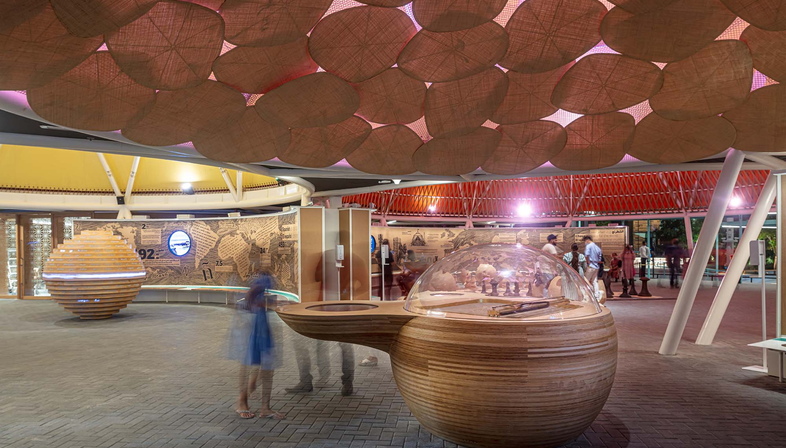 EXPO Dubai 2020 is impressing visitors with truly outstanding offers, both from a technological and a sustainability point of view. These include the installation of the Spanish pavilion at Expo Dubai 2020, organised and coordinated by Acción Cultural Española (AC/E). Following the motto "Intelligence for life", the joint venture created by the international architecture firm External Reference founded by Italian architect Carmelo Zappulla and by Onionlab, a multidisciplinary studio that directs and produces international audiovisual installations and exhibitions, both based in Barcelona, has conceived a 3D printed artificial forest able to produce oxygen and an interactive tree that reacts to the sustainable behaviours of the public. The Pavilion, as well as the whole exhibition project have been built using the principles of the circular economy and can therefore be recycled, reused in their entirety or disassembled to be used elsewhere.
EXPO Dubai 2020 is impressing visitors with truly outstanding offers, both from a technological and a sustainability point of view. These include the installation of the Spanish pavilion at Expo Dubai 2020, organised and coordinated by Acción Cultural Española (AC/E). Following the motto "Intelligence for life", the joint venture created by the international architecture firm External Reference founded by Italian architect Carmelo Zappulla and by Onionlab, a multidisciplinary studio that directs and produces international audiovisual installations and exhibitions, both based in Barcelona, has conceived a 3D printed artificial forest able to produce oxygen and an interactive tree that reacts to the sustainable behaviours of the public. The Pavilion, as well as the whole exhibition project have been built using the principles of the circular economy and can therefore be recycled, reused in their entirety or disassembled to be used elsewhere.But let’s take a closer look, starting from the Spanish Pavilion building itself, designed by the Amann, Cánovas & Maruri (Temperaturas Extremas Arquitectos) architecture firm and located in the Sustainability District. The Pavilion immediately catches the eye thanks to a series of prominent cone trunks that rise over the landscape, evoking the image of a traditional town square. The pavilion is built with reusable materials including wood, iron and fabric, while its conical shape helps increase air flow, thus modulating the temperature of the public space in a sustainable way.
Carmelo Zappulla, founder and director of External Reference, explains the title "Intelligence for life": "Thanks to learned and shared knowledge, it is possible to act as collective intelligence and save the planet through adopting and adapting more sustainable lives and businesses". The exhibition itinerary begins on the ground floor where a group of open squares hosts a series of installations. Among these, El Bosque de la Inteligencia (the Intelligence Forest), a 3D printed artificial forest that immerses visitors in an extraordinary world where the digital and physical dimensions merge to produce unique experiences. The trees are constructed in a sustainable bioplastic polymer made with corn dextrose (sugar), mixed with "pure.tech", a natural mineral compound that is able to capture and mineralise some of the major greenhouse gases and pollutants in our atmosphere, including CO2, nitrogen oxides (NOx) and volatile organic compounds (VOCs). This built techno landscape is, indeed, capable of producing oxygen and food through photosynthesis, thanks to a series of photo-bioreactors containing microalgae, such as spirulina and chlorella, which have been designed specifically for the pavilion. The Bosque is a metaphorical space that uses interactive resources to engage visitors, forcing them to consider the impact their actions have on society as a whole and therefore on the environment.
In the final section of the Bosque, we find the Tree of Balance: the interactive heart both of the Pavilion, as well as of the exhibition space, designed to collect all the interactions and knowledge of visitors within the forest. Answering questions about their consumption habits, either through the app or a set of 30 interactive screens, visitors will see the tree physically react positively or negatively, releasing a blue or a red drop depending on their answers. The aggregate of all the drops will determine whether the tree will turn green and leafy or if it will lose its foliage and dry out, thus confronting visitors with a highly visual outcome resulting from their sustainability habits, as well as giving them the opportunity to discover more about Spain and its sustainability initiatives. A tangible and captivating way to help make us all more aware of our impact on planet Earth.
Christiane Bürklein
Project: External Reference, Onionlab
Location: Dubai
Year: 2021
Images: Adrià Goula
Find out more: http://www.expospain2020.com/










